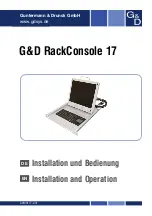
16
Delfield
TROUBLESHOOTING CHART
SYMPTOM
CAUSE/REMEDY
Unit does not run.
Make sure the unit is plugged into a proper power source.
Check for a blown fuse or tripped breaker.
Test the outlet for the correct voltage (120V).
Inspect the electrical cord for damage.
Unit has power but does not run.
Check for power at the junction box inside the compressor compartment.
Check for power coming out of the control board (12VDC) at the terminal for
the control board.
If no power is coming out of the control board, replace the control board.
Compressor does not run
Check voltage from the control board.
but the fan works.
Make certain there is ample air flow for the evaporator and condenser coils.
Clean the condenser coils.
Test the compressor relays for overload.
Test the compressor for open or shorted windings.
Check control settings and make sure the control is calling for the fans to run.
Evaporator fans do not run.
Check for voltage (12VDC) at the fan motors.
Check for obstructions to the fan blade.
Check to see if the door switch is open or is shorted out.
Check control settings and make sure the control is calling for the fans to run.
Condenser fans do not run.
Check for voltage (12VDC) at the fan motors.
Check for obstructions to the fan blade.
Check control settings and make sure the control is calling for the fans to run.
Check the temperature sensor in the condenser coil to see if it is open or shorted.
Unit is not reaching desired
Check to see that the unit is in the correct mode of operation.
temperature.
Check to see that the unit is set at the desired set point.
Check to see if the box temperature sensor is open or shorted.
Listen to determine if the compressor is cycling or if the unit is continuously running.
Check evaporator air flow.
Check for ice buildup on the evaporator coils.
Check the drawers and gaskets to ensure they seal properly.
Unit is getting too cold.
Check to see that the unit is in the correct mode of operation.
Check to determine that the unit is set at the desired set point.
Check to determine if the box temperature sensor is open or shorted.
Listen to determine if the compressor is cycling or if the unit is
continuously running.
TROUBLESHOOTING
GENERAL
The troubleshooting chart below provides common
symptoms, causes and remedies. The chart cannot
cover every problem that may occur. However, the
most common problems, as shown in the table, can be
used to troubleshoot many symptoms. The chart used
in conjunction with the diagnostics screen provides
good troubleshooting information.
DIAGNOSTICS
The diagnostics screen as described above provides an
ongoing display of drawer data. The diagnostics screen
does not time out but remains available for observation by
a service technician. This screen can be accessed as
described above.






































